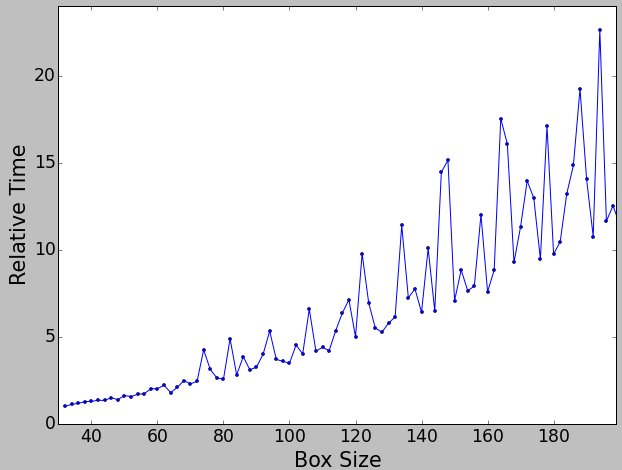|
Size: 734
Comment:
|
Size: 1185
Comment:
|
| Deletions are marked like this. | Additions are marked like this. |
| Line 8: | Line 8: |
| [[attachment:rel_time.jpg|]] | Clearly there are some good box sizes, and some very bad box sizes. A better way to plot this is with respect to anticipated speed for an N^2 algorithm. This is the reciprocal of the same plot divided by box size squared, normalized so 512 is 1. That is, larger values indicate better relative speeds. Of course, 103 is still faster than 512, but if you look in a local neighborhood for a peak, that will correspond to a good box size to use. {{attachment:rel_speed.jpg}} |
Particle Box Size and Speed
Various algorithms in EMAN2 will depend non-linearly on the box size of the particle. Sometimes (such as the case with FFTs), this behavior will appear bizzare. For example refinements with a box size of 45 pixels will run roughly twice as fast as those with a box size of 47, and 44 is about 20% faster than 45.
The following plot shows how long it takes to compute one similarity matrix element for a noisy particle aligned to a noise-free reference with the rotate-translate-flip aligner, refine alignment enabled with the dot comparator, and a phase residual for a similarity metric. ie - typical options for a real refinement:

Clearly there are some good box sizes, and some very bad box sizes.
A better way to plot this is with respect to anticipated speed for an N^2 algorithm. This is the reciprocal of the same plot divided by box size squared, normalized so 512 is 1. That is, larger values indicate better relative speeds. Of course, 103 is still faster than 512, but if you look in a local neighborhood for a peak, that will correspond to a good box size to use.
